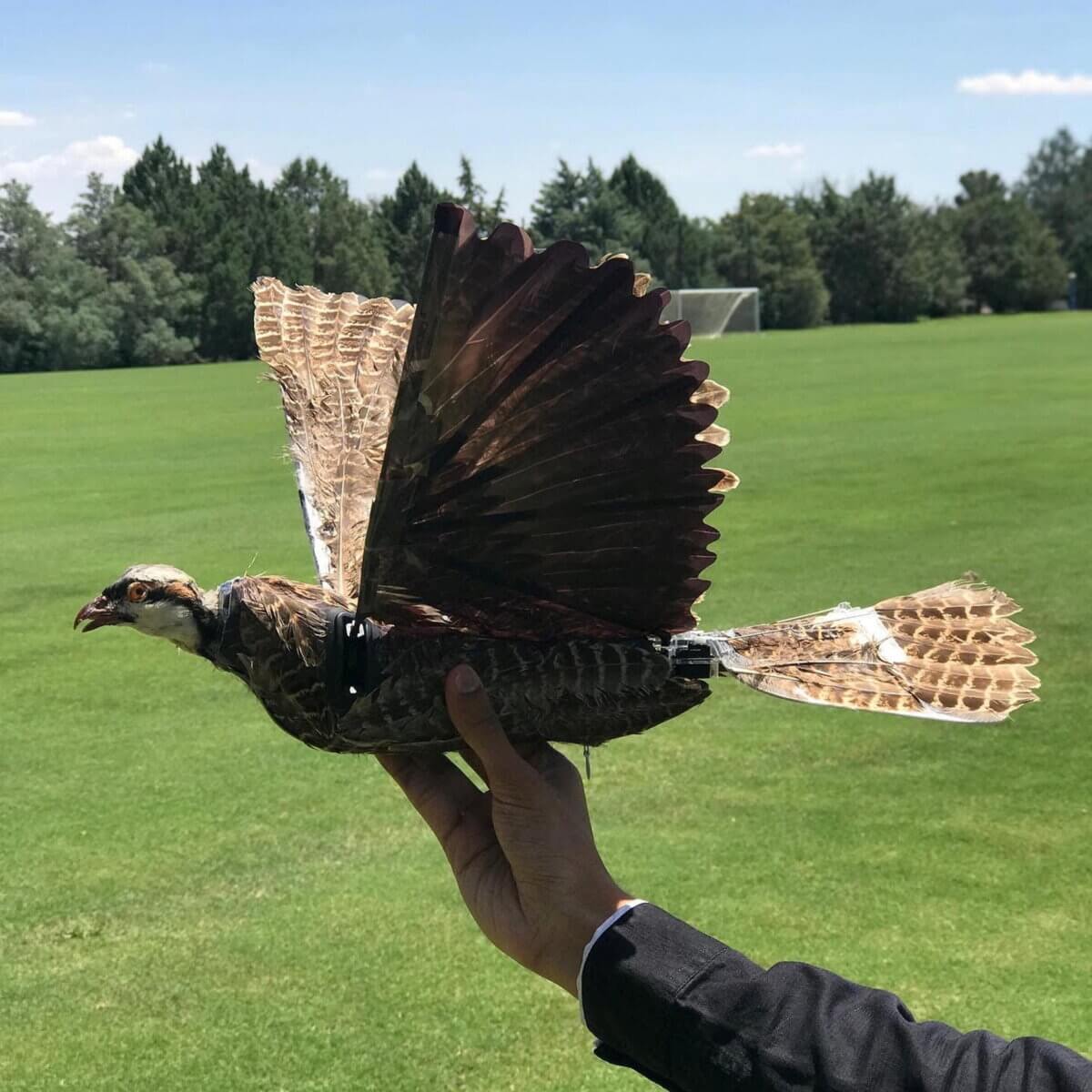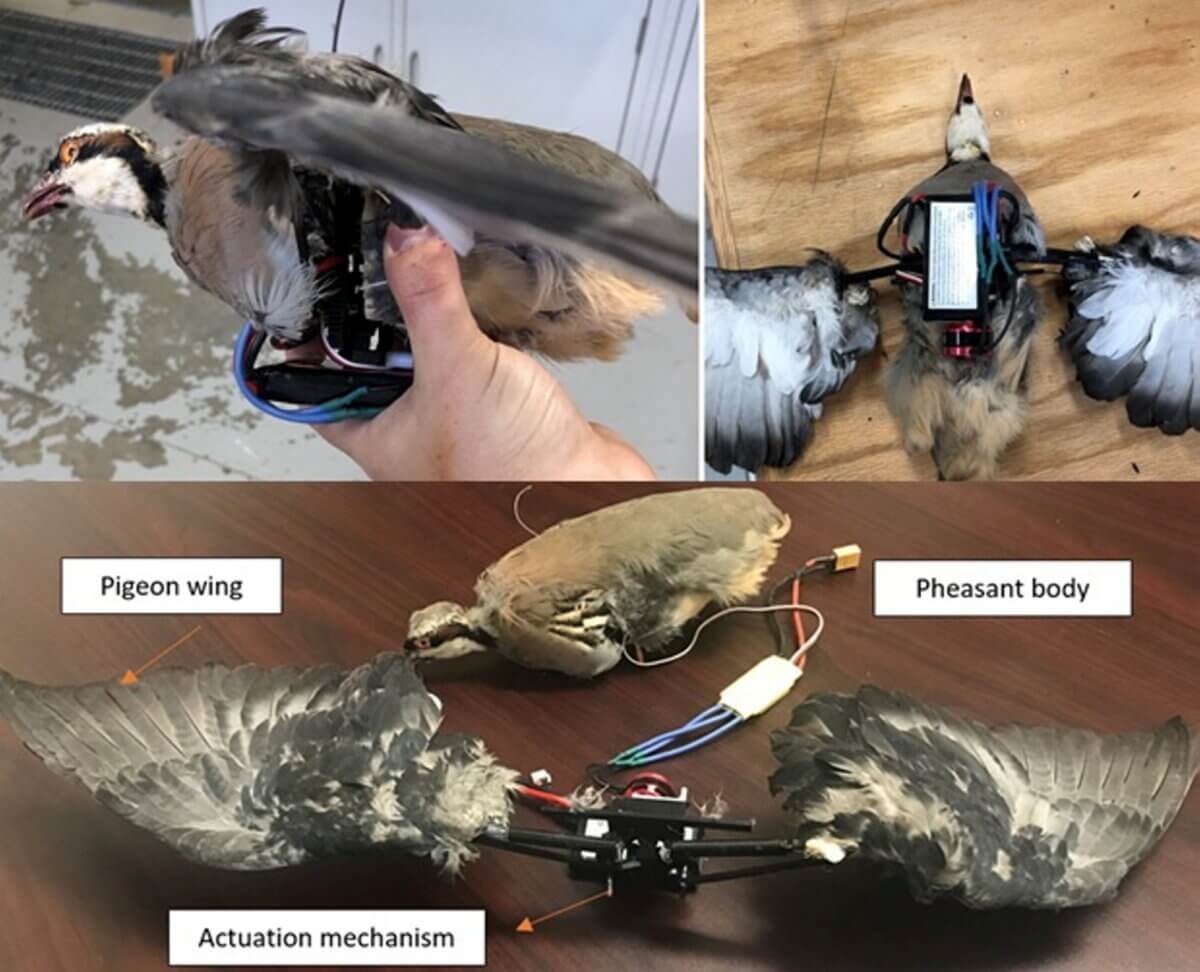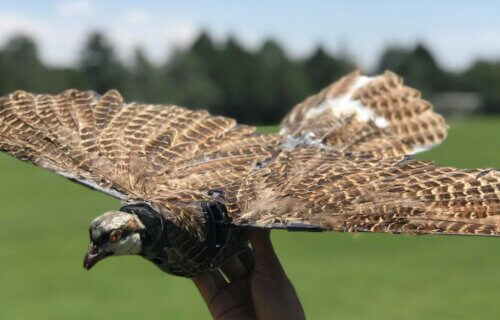SOCORRO, N.M. — Up in the sky, it’s a bird, it’s a plane — it’s a dead zombie bird scientists are using as a drone? Researchers at New Mexico Tech are using the time-honored art of taxidermy to help them develop “zombie drones” out of the bodies of deceased birds.
The team found a way to use these body parts to create realistic avian imposters. They believe that the drones can aid in wildlife monitoring, by blending in better with natural environments. Assistant professor of mechanical engineering, Dr. Mostafa Hassanalian, emphasizes that the team does not kill birds to create the devices and they have no intention of using the drones to spy on others.

“I should mention that the main and only use for this project is wildlife monitoring, not spying. Drones are being used for wildlife monitoring; however, they create lots of noise which could scare the animals,” Dr. Hassanalian says, according to a statement from SWNS.
“No real birds were physically harmed in the making of the drones, and we do not intend to do this at all. We have only used the feathers and taxidermy birds that are available in the Market and have worked with local taxidermy artists.”
“Our main goal for this is to develop a nature-friendly drone concept for wildlife monitoring,” Dr. Hassanalian continues. “Traditional drones are often disruptive to ecosystems due to issues such as sound and unfamiliarity, so developing quieter, natural-looking alternatives could help wildlife monitoring and research.”

Scientists have a few more tweaks to make before the birds are life-like
The study, presented in a paper during the AIAA SCITECH 2023 Forum, looks into the use of combining taxidermy birds and flapping wing drones so that wildlife monitoring will look more seamless and natural. The paper explains that by using 3D flapping and aerodynamic simulators, researchers were able to set limits on aerodynamic flapping characteristics for a specific set of drone wings. This allowed the implementation of flapping mechanisms and testing of the aerodynamics of the flapping wing drone.
“It is discovered that although it is difficult to create such a drone, it is very practical for research purposes and can keep nature undisturbed,” the researchers write.
Dr. Hassanalian’s team suggests that improvements on the flapping wing drone would help make the overall drone look more natural in the air.
“Spur gears can be changed to helical gears so there is reduced noise and an increase in longevity. Bendable wrists would help in making the wings more flexible in flight. Adding different flight options to the drone could yield an easier user experience and aid in a more natural flight,” the team concludes.
A final improvement would be to add legs so that the drone can perch and monitor wildlife without using as much battery power.
South West News Service writer Dean Murray contributed to this report.

